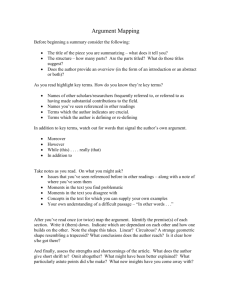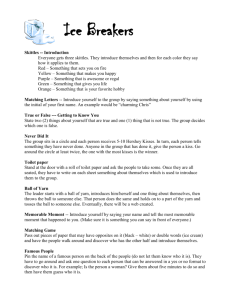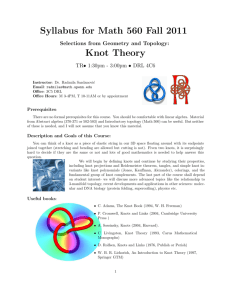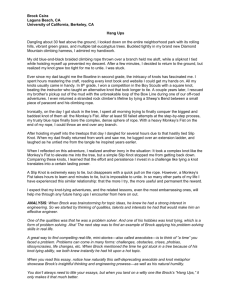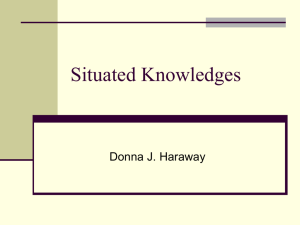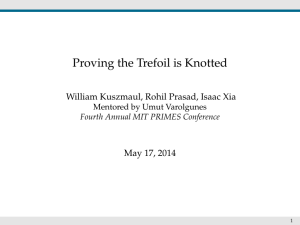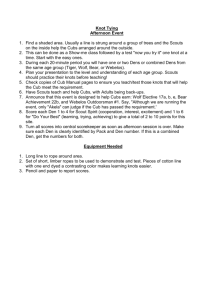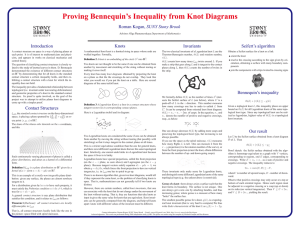Art + Life Spring 2009 UCSC Lindsay Kelley Final paper assignment
advertisement
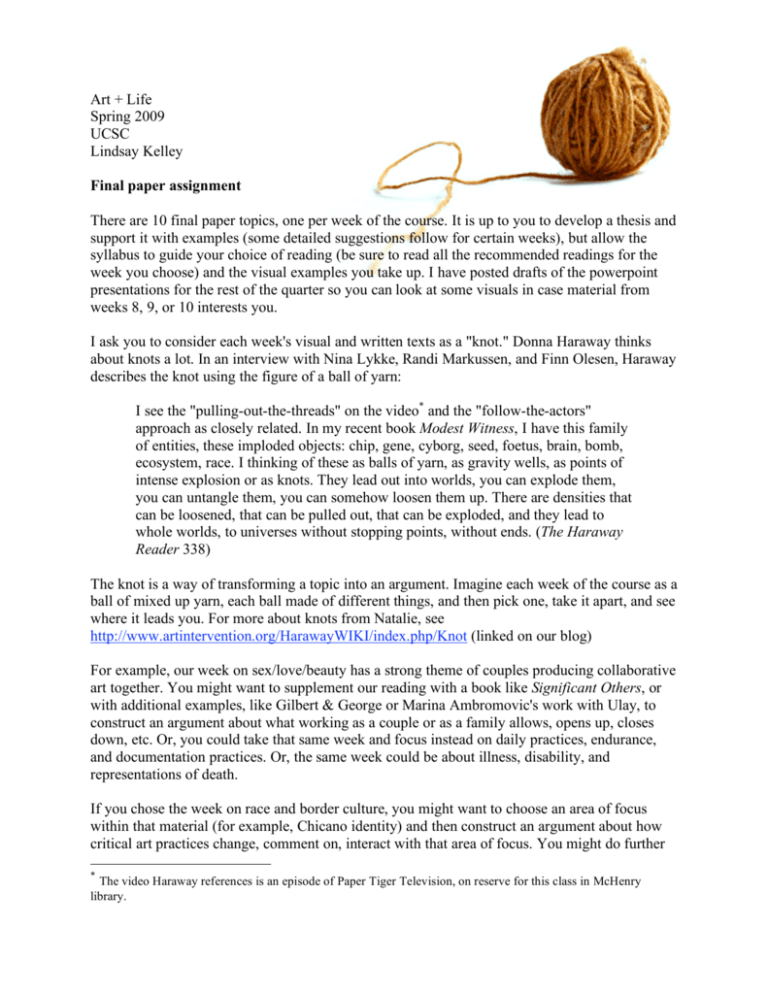
Art + Life Spring 2009 UCSC Lindsay Kelley Final paper assignment There are 10 final paper topics, one per week of the course. It is up to you to develop a thesis and support it with examples (some detailed suggestions follow for certain weeks), but allow the syllabus to guide your choice of reading (be sure to read all the recommended readings for the week you choose) and the visual examples you take up. I have posted drafts of the powerpoint presentations for the rest of the quarter so you can look at some visuals in case material from weeks 8, 9, or 10 interests you. I ask you to consider each week's visual and written texts as a "knot." Donna Haraway thinks about knots a lot. In an interview with Nina Lykke, Randi Markussen, and Finn Olesen, Haraway describes the knot using the figure of a ball of yarn: I see the "pulling-out-the-threads" on the video* and the "follow-the-actors" approach as closely related. In my recent book Modest Witness, I have this family of entities, these imploded objects: chip, gene, cyborg, seed, foetus, brain, bomb, ecosystem, race. I thinking of these as balls of yarn, as gravity wells, as points of intense explosion or as knots. They lead out into worlds, you can explode them, you can untangle them, you can somehow loosen them up. There are densities that can be loosened, that can be pulled out, that can be exploded, and they lead to whole worlds, to universes without stopping points, without ends. (The Haraway Reader 338) The knot is a way of transforming a topic into an argument. Imagine each week of the course as a ball of mixed up yarn, each ball made of different things, and then pick one, take it apart, and see where it leads you. For more about knots from Natalie, see http://www.artintervention.org/HarawayWIKI/index.php/Knot (linked on our blog) For example, our week on sex/love/beauty has a strong theme of couples producing collaborative art together. You might want to supplement our reading with a book like Significant Others, or with additional examples, like Gilbert & George or Marina Ambromovic's work with Ulay, to construct an argument about what working as a couple or as a family allows, opens up, closes down, etc. Or, you could take that same week and focus instead on daily practices, endurance, and documentation practices. Or, the same week could be about illness, disability, and representations of death. If you chose the week on race and border culture, you might want to choose an area of focus within that material (for example, Chicano identity) and then construct an argument about how critical art practices change, comment on, interact with that area of focus. You might do further * The video Haraway references is an episode of Paper Tiger Television, on reserve for this class in McHenry library. research on a group or event touched on lightly in lecture or not touched on at all (for example, the Royal Chicano Air Force, the Teatro Campesino, or the Brown Berets' occupation of Catalina Island in 1972). If you were to choose this week, on environmental art and bioart, you might look at how artists contribute to larger discursive fields in the arena of environmental activism. Alternately, you could focus on bioart, considering what "art + life" means when "life" is literally living tissue. I do not expect you to make extensive use of every single text and image from a given week— such a strategy would yield an unfocused, messy paper. I do expect you to ground your argument in the theme of the week you choose, and to draw on recommended readings and at least a few resources from outside the class. Pay attention to time, chronology, and how the examples you choose talk to each other. What is your ball of yarn made of? How do the different materials look together? To sum up, here are the requirements for the final paper: • Choose a week from the course and consider it as a relational "knot." • Let the readings and visual examples from that week shape your argument. • Investigate at least 1-2 outside sources. • Incorporate at least 3-4 direct quotes into your paper, and cite them using MLA style (include a list of works cited). • Write at least 6 pages (double space, Times 12 pt, 1" margins), but no more than 10. • The paper is due June 8 by 5:00 pm, when the History of Consciousness office closes. The paper should be placed in your TA's mailbox (not mine!) and if you want written feedback, you must include a SASE (no on campus addresses). Some of the things that your TA will consider when grading include: • Clear thesis and relevant supports • Writing and grammar • Moving beyond summary of the week's topic to develop an argument and a clear path through the material • Satisfactory execution of all of the above requirements • Our late work policy will be in effect There will be time devoted to developing your paper in section and in lecture. In week 9 or 10, at the discretion of the TA, you will be required to bring a draft of your paper to section for a workshop. The draft need not be long or complete, but if you do not bring a draft, you will be marked absent and asked to leave. Please take advantage of my office hours,* your TA's office hours, and our discussions about the paper in section and lecture. If you have questions about what a "knot" is, you can ask Donna Haraway directly: she will be visiting our class on May 18. * Note that my office hours are canceled on May 20 and 27. I am around for appointments after class on the 18th & 27th. On the 27th, I will be installing my MFA show at the MAH downtown. You are welcome to come down there and talk to me about stuff, but I won't be at my most focused and you might get roped into helping with the show.


